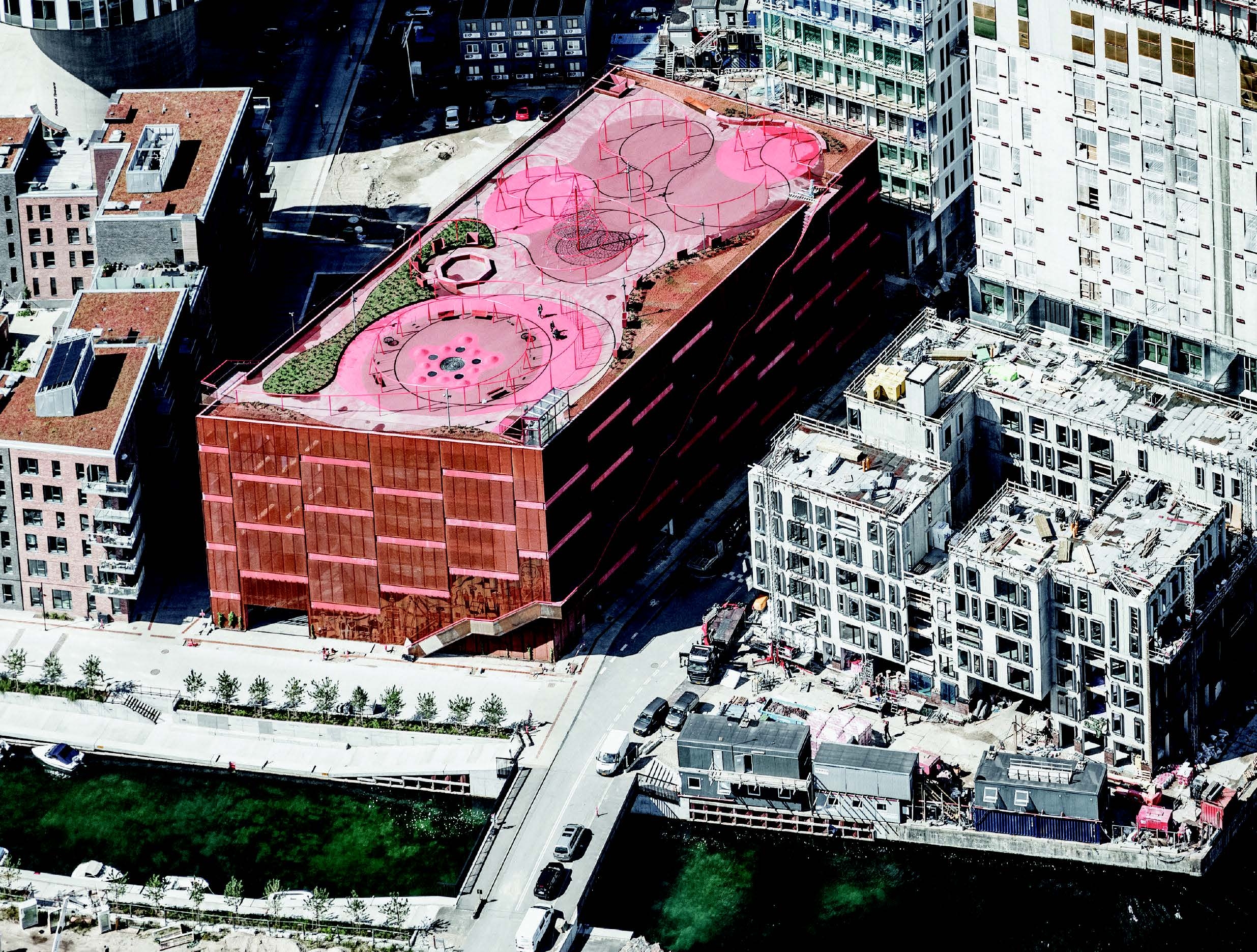
Rooftop gardens with outdoor play areas are an increasingly familiar feature of new developments as developers respond to growing urban density. Here are three stunning examples below.
Caxton Works mixed use commercial, residential and retail development
Caxton Works, also known as Royal Gateway, is a 2.2 acre redevelopment regenerating the former Goswell Bakeries building in Canning Town, London. The development forms part of the wider redevelopment of The Royal Docks.
Five new apartment blocks make up the residential element of the scheme with 336 apartments and penthouses as well as recreational courtyard areas including a two story landscaped rooftop community garden and terraces.
Landscape architects Liz Lake Associates designed this for the purposes of play and recreation. Individual podium areas with a central open space are formed by raised beds. Each of these spaces provides a setting for a striking play point in keeping with the modern design.
Liz Lake chose Russell Play Silhouette play units for their ample opportunities for physical activity from climbing, balancing and swinging to hanging and sliding. Each stainless steel piece is set within its own area atop of wetpour rubber surfacing, selected for its drainage properties to reduce the build-up of surface water. The green rubber combines well with the roof’s artificial grass and planting, while the curves of the units echo the curvature of the walls, surfaces, paths and raised beds striking a contrast to the angular nature of the apartments and skyline. The overall effect is one of an aesthetically-pleasing sculpture park.
Skyline Plaza in Frankfurt
Skyline Plaza is a shopping centre with more than 400,000sq ft of retail space. Contemporary stainless steel play equipment was employed in the design of it’s 2.7 acre roof garden. It features multiple recreation facilities including a life-size chess board, table tennis tables, a petanque area, putting green and two playgrounds.
Working with ECE Architecture, Berliner Seilfabrik supplied play equipment for the playgrounds. Cosmo, the company’s globe shaped rope climber, was positioned close to the Skyline Garden’s family restaurant allowing youngsters to play within sight of the outdoor terrace. The Cosmo comprises a three-dimensional rope net held within an outer stainless steel frame. An additional banister was also selected; its parallel, curving pipes serving as both a play feature and attractive design element.
Stainless steel play points from Berliner’s Urban Design Berlin range are scattered around the second play area. Some of the equipment lies within minimal fall heights and therefore requires no impact protection, which made it ideal for the roof’s pedestrian zones – a network of paths, street furniture and lighting set throughout areas of grass and planting.
Lüders Park ‘n’ Play in Copenhagen
Lüders Park ‘n’ Play is an urban recreation space for children and adults on top of a car park. It is in the Nordhavn district of Copenhagen which is set to receive thousands of new inhabitants in the next few years. It is an example of a new approach to urban spaces in dense cities.
“The project re-invents the parking structure, with the facades and roof accessible and inviting to the public. As an urban space, the new parking structure tells a story of an active city, and our project challenges the traditionally mono-functional use of a car park,” says Kathrin Susanna Gimmel, lead architect and co-founder of JAJA.
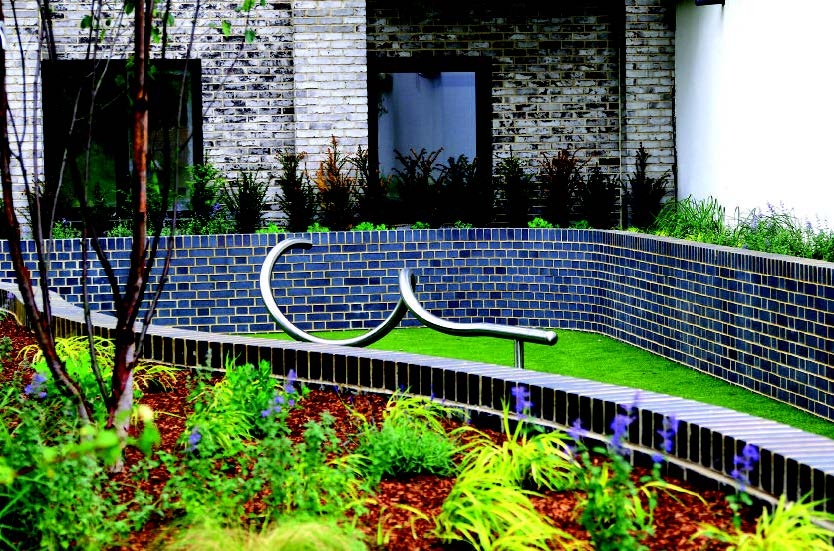
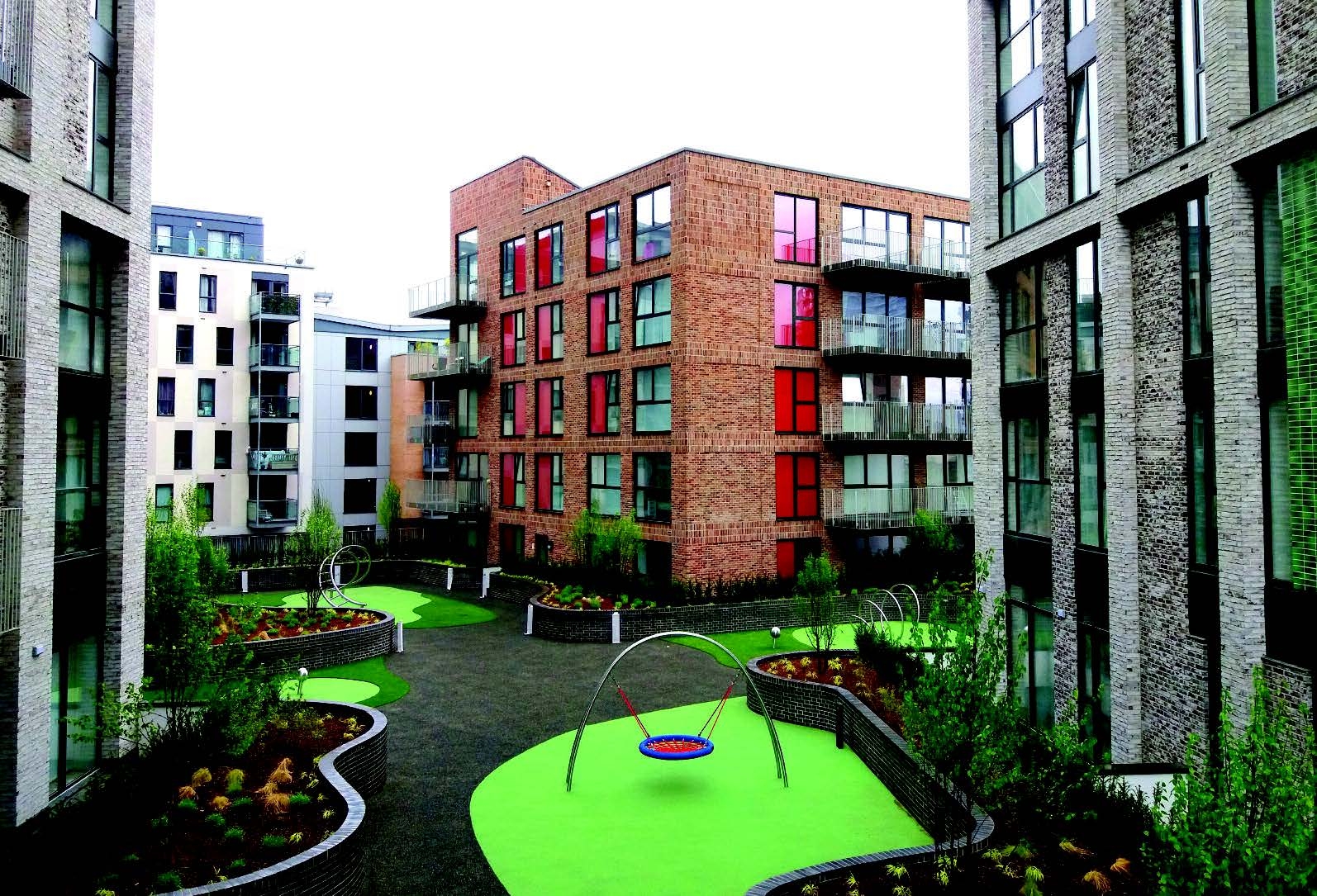
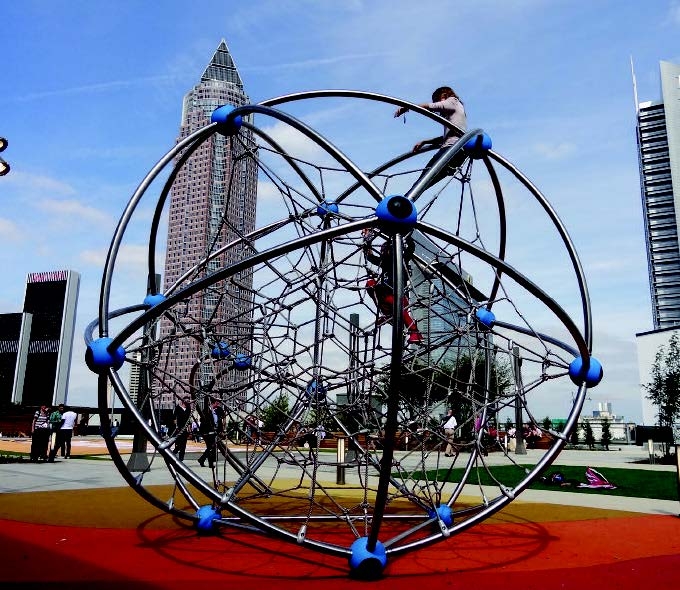
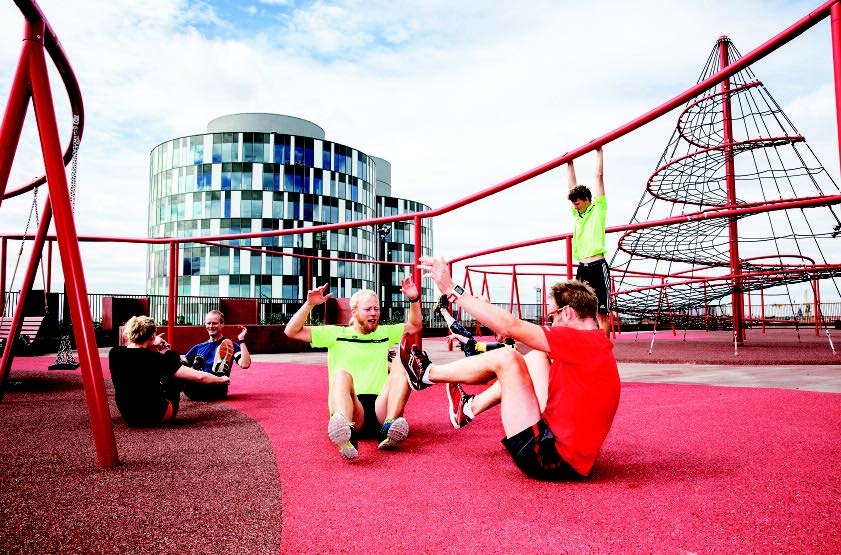
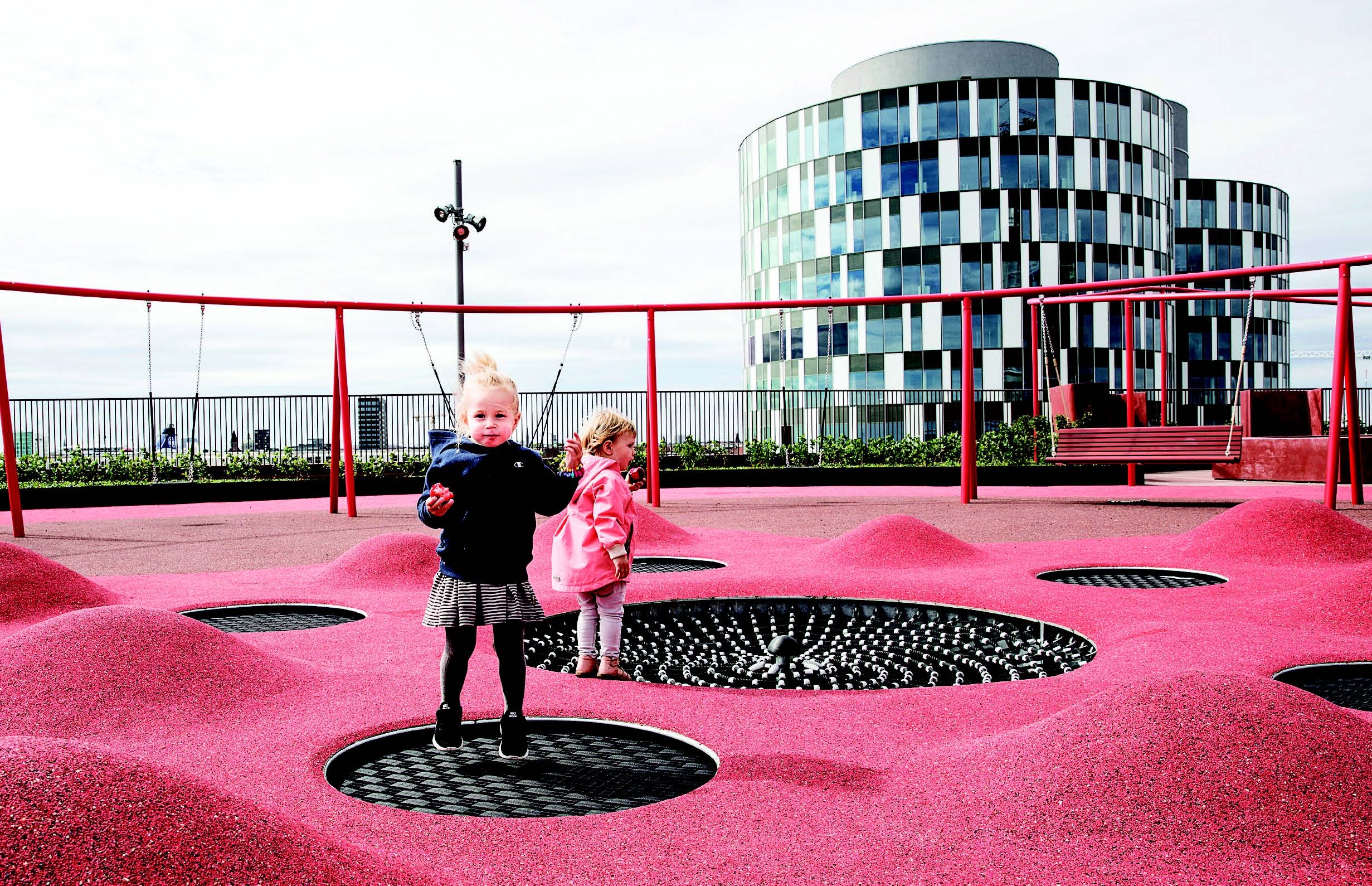
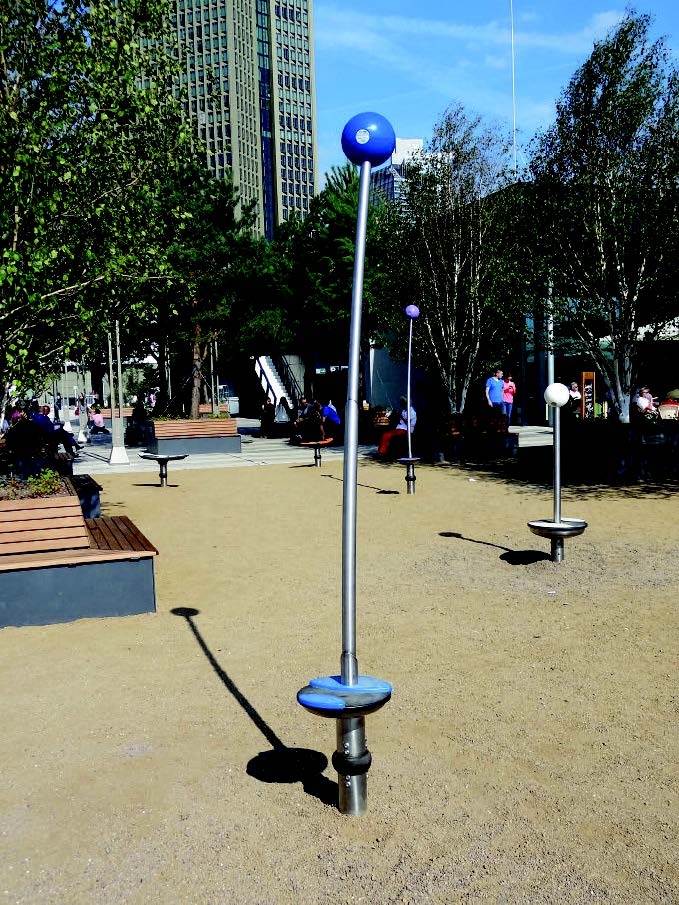
JAJA Architects worked with Danish playground company UNO and Berliner Seilfabrik on the rooftop recreation area. JAJA Architects chose to combine standard play equipment with bespoke items. Inspired by the staircases on the exterior of the iconic Centre Pompidou in Paris, a flight of stairs rises up from the ground floor across the long sections on the north and south side of the car park up to the roof. The red handrail of the stairs continues onto the roof and is integrated like a red thread in the various play structures serving as a key element in the swings, benches and monkey bars. It finally leads visitors to the highlight of the rooftop playground: a rope climber with a helical net standing almost 8m tall.
The scheme’s various rails, ropes, trampolines and mounds are used for play as well as fitness training making the rooftop a popular place for children and adults alike.
Construction challenges
There are specific challenges when creating urban spaces and play areas on rooftops. Like any play area, safety is paramount, but in rooftop spaces the safety process starts before construction with risk assessments, plans for site safety management and various construction certificates required.
The equipment generally needs to be lifted onto site with cranes, so lifting plans, packaging and product design requirements must also be defined in the early stages of the project.
The play equipment and the play area has to conform to the relevant European standards, and building on high rise buildings means extra demands on the stability of the products as well as construction requirements. The challenge is to integrate safety in an attractive and unobtrusive way, which can be achieved with well-designed routing and landscaping.
Utilising the existing roof structure as a solid foundation without compromising its waterproof and drainage properties is another challenge. For example, 16 substantial anchors were required to secure the 8m high pyramid structure at Lüders Park ‘n’ Play. And laying deep cement foundations was not feasible at Skyline Gardens,. So Berliner created shallow foundations into which Cosmo was anchored with directly attached base plates.
At the same time, space to hide any structural and foundation elements is often limited, which may mean adapting the equipment for rooftop projects.
Rooftop recreational spaces are here to stay
Play designers are increasingly working on rooftop play schemes. Each project requires a bespoke solution determined by the building methods employed, the materials used and the type of play equipment selected. Yet however challenging rooftop constructions may be, these former no-go areas for the public now offer great recreational opportunities for our growing cities.